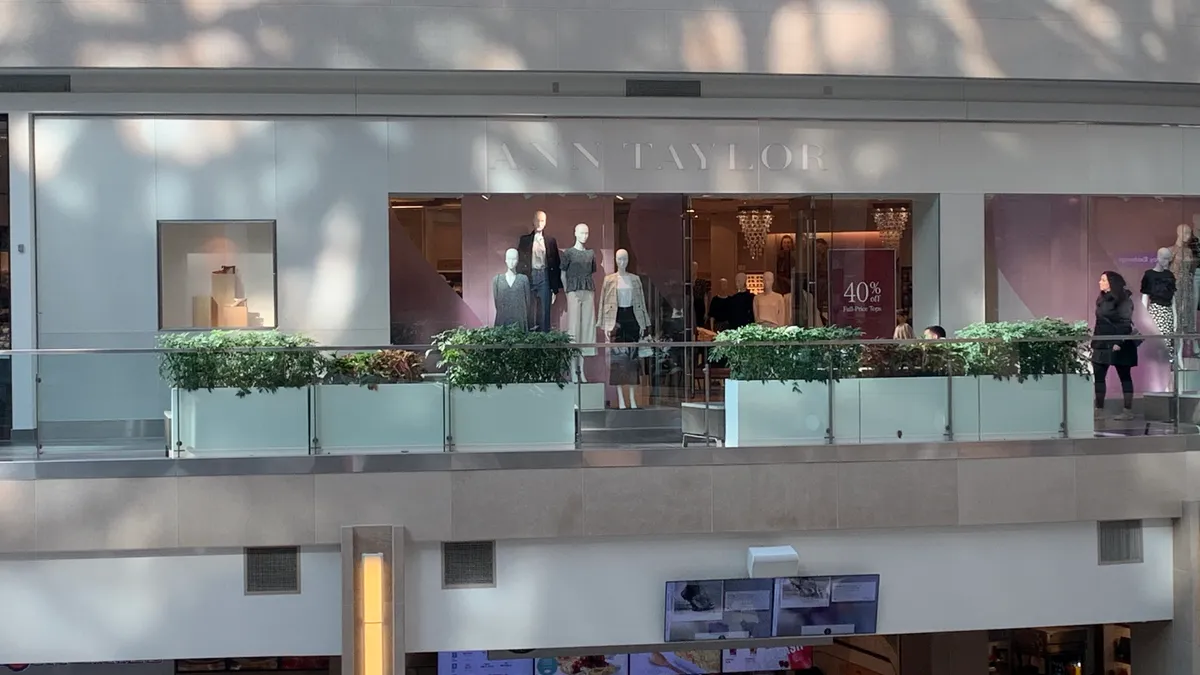Dive Brief:
- Ascena's plan to reorganize in bankruptcy is set for a vote by creditors after a key milestone in the Chapter 11 process.
- According to the company, a federal bankruptcy judge has signed off on the apparel retailer's disclosure statement, a comprehensive summary of Ascena's operations and reorganization plan.
- Votes are due by Oct. 13, and a confirmation hearing for the plan is scheduled for Oct. 23, according to court papers.
Dive Insight:
Ascena is headed into the final phases of its reorganization that will leave it a different-looking company. The retailer recently announced that FullBeauty brands was the successful bidder for its Catherines business, with a purchase price of $40.8 million. It has also moved to close 23 more stores, adding to its list of more than 1,000 closures.
When all is said and done, Ascena's go-forward footprint will consist of roughly 1,300 stores, though it is still negotiating with landlords, CEO Gary Muto said in a press release. Making up the retailer's remaining stable of banners are Ann Taylor, Loft, Lane Bryant, Justice and Lou & Grey.
In some sense, Ascena used the bankruptcy process to undo parts of an ill-fated expansion earlier in the decade. Fueled by debt, the company that started out as Dressbarn (which Ascena liquidated out of court last year) bought up mall-based apparel retailers right ahead of a major contraction in the sector. Some consider its acquisition spree one of the greatest retail mistakes of modern history.
In recent years, with sales on a downward slope and losses piling up, Ascena moved quickly to cut costs and jettison assets. Along with the Dressbarn closures, it earlier sold off a majority stake in Maurices and has gone through rounds of store closures, layoffs and executive shuffling. The pandemic, with its attendant store closures, proved too much for Ascena to manage outside of a court process.
Under Ascena's bankruptcy plan, it will get around $1 billion in debt relief by converting loans into equity in the company, turning control over to lenders in the process. The company said that the plan has the support of 95% of its secured term lenders, a key voting group.
The hope, of course, is that all this leaves Ascena healthier when it emerges from bankruptcy. "Collectively, we believe these actions will enable us to strategically invest in the business and generate sustainable, profitable growth once we emerge from the Chapter 11 process," Muto said.
A cleaner balance sheet and slimmed-down physical structure are important, but Ascena will still have to contend with a tough and unpredictable apparel market. Dress clothes have taken a hit from the work-from-home surge during the pandemic, while consumers have put much of their spending into home goods and other categories. Some analysts expect apparel sales to remain below 2019 levels until 2022.















